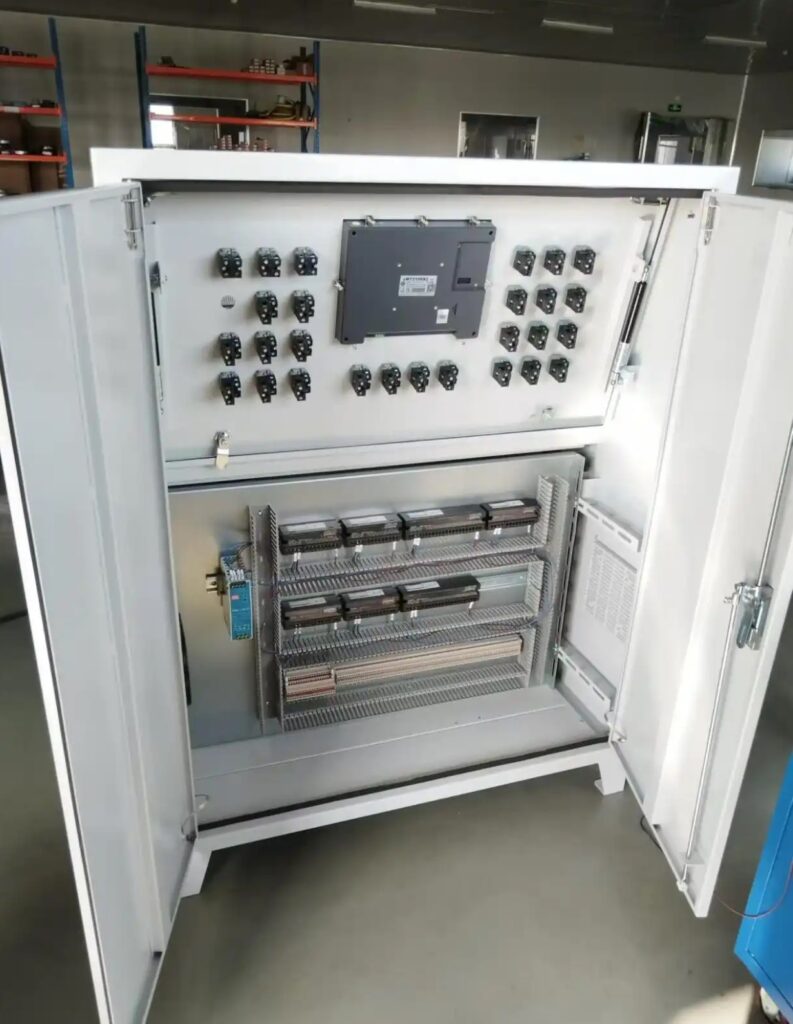The process control function of the automation instrument control cabinet is mainly realized through the cooperation of hardware devices such as controllers, sensors, actuators, and software systems such as control algorithms and configuration software. The following is a detailed introduction:
Hardware level
Real-time sensor detection: The sensor is a key component for obtaining process parameters and can sense various physical quantities in the production process in real time. For example, the temperature sensor uses the principle of thermal resistors or thermocouples to convert temperature signals into electrical signals; the pressure sensor converts pressure changes into measurable electrical signals based on the piezoresistive effect. These sensors transmit the collected analog or digital signals to the controller, allowing the system to understand the status of the production process in real time.
Controller operation and processing: The controller is the core of the automation instrument control cabinet. Common ones include programmable logic controllers (PLCs), distributed control systems (DCSs), and intelligent controllers. After receiving the signal from the sensor, the controller performs operation and processing according to the preset control algorithm and logic. Taking PLC as an example, it analyzes and processes the input signal through scanning the input signal, executing the user program, refreshing the output, and other working processes to determine the control signal to be output.
Accurate execution of the actuator: The actuator adjusts and controls the production process according to the control signal sent by the controller. For example, the regulating valve changes the valve opening according to the control signal, thereby adjusting the flow of the fluid; the frequency converter adjusts the speed of the motor according to the control signal to achieve speed control of the motor-driven equipment, and finally achieves the purpose of controlling the production process.
Software level
Application of control algorithm
PID control algorithm: This is one of the most commonly used control algorithms. It calculates and processes the deviation signal through three links: proportional (P), integral (I), and differential (D). The proportional link outputs the control amount in proportion to the size of the deviation and can respond quickly to the deviation; the integral link is used to eliminate the steady-state error of the system so that the controlled variable can eventually stabilize at the set value; the differential link predicts the change trend of the deviation according to the rate of change of the deviation, and adjusts the control amount in advance to improve the dynamic performance of the system.
Advanced control algorithm: For some complex production processes, advanced control algorithms are also used, such as model predictive control (MPC), fuzzy control, neural network control, etc. Model predictive control is based on the mathematical model of the process. It predicts the future process output and calculates the optimal control strategy according to the optimization goal. Fuzzy control uses fuzzy logic and fuzzy rules to convert fuzzy input information into precise control quantity, which is suitable for systems where it is difficult to establish precise mathematical models.
Configuration software configuration: Configuration software is an important tool for realizing the process control function of the automation instrument control cabinet. Users can easily design control logic, set parameters, configure screens, etc. through configuration software. In the configuration software, you can build the control process through a graphical interface, set the parameters of the controller, the connection relationship between sensors and actuators, etc., and display the parameters of the production process, equipment status and other information in real time, which is convenient for operators to monitor and operate.
System level
Multivariable coordinated control: In complex production processes, multiple variables are often involved in the interrelationship and influence of multiple variables, and multivariable coordinated control is required. The automated instrument control cabinet achieves simultaneous control and coordinated optimization of multiple variables by establishing mathematical models or control strategies between multiple variables. For example, in the control of distillation towers in chemical production, multiple variables such as tower top temperature, tower bottom temperature, reflux ratio, feed flow rate, etc. need to be controlled simultaneously to ensure product quality and output.
Feedback control mechanism: The automation instrument control cabinet usually adopts a closed-loop feedback control mechanism to compare the actual value of the controlled variable with the set value to obtain a deviation signal. The controller adjusts the control quantity according to the deviation signal, so that the controlled variable changes in the direction of reducing the deviation, thereby achieving precise control of the production process. For example, in a temperature control system, the temperature sensor measures the actual temperature in real time and feeds it back to the controller. The controller compares the actual temperature with the set temperature, adjusts the power of the heating equipment according to the deviation, and keeps the temperature near the set value.



